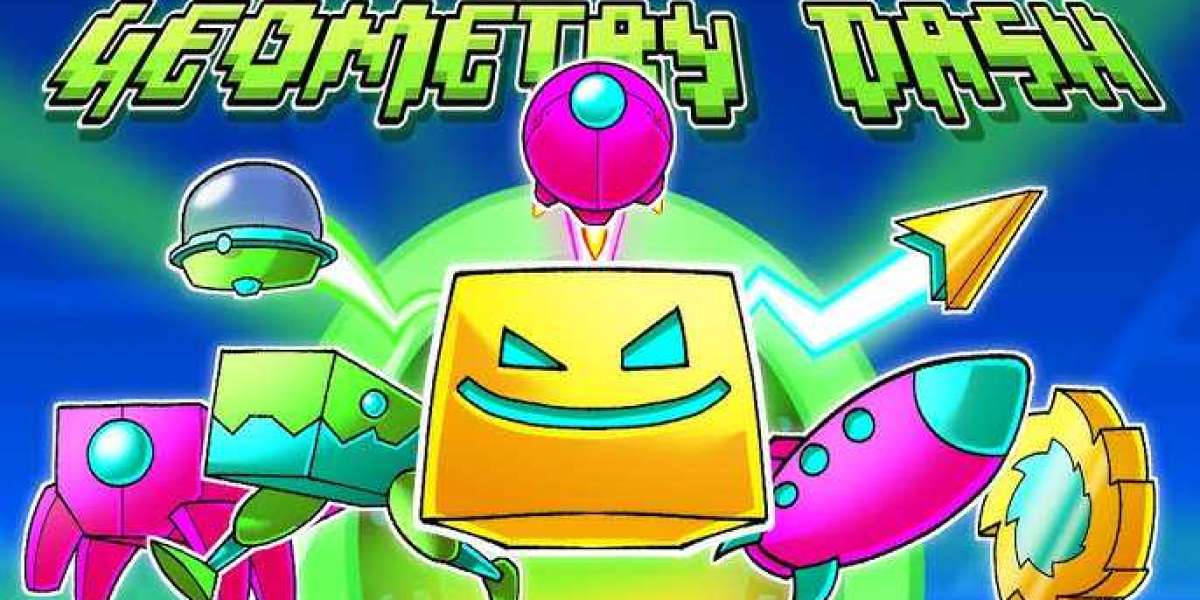In the world of video games, some titles become global sensations not because of flashy graphics or complicated storylines, but because of their ability to capture pure fun and challenge. Geometry Dash, developed by Robert Topala and published by RobTop Games in 2013, is one such game. With its simple design, rhythm-based mechanics, and incredibly challenging levels, Geometry Dash has become one of the most beloved platformers in the modern era.
This article explores the origins of the game, its gameplay mechanics, modes, community, cultural influence, and why it remains so addictive more than a decade after its release.
Origins and Development
Geometry Dash was created by Swedish developer Robert Topala, who wanted to design a game that was easy to understand but difficult to master. Initially released on iOS and Android in 2013, the game was later expanded to PC via Steam.
What made Geometry Dash stand out was its rhythm-based gameplay, where the music and the level design were perfectly synchronized. This marriage of sound and visuals created a unique experience, unlike many other platformers at the time.
Gameplay Basics
At its core, Geometry Dash is a one-button game. Players control a square-shaped icon that automatically moves forward. By tapping the screen, pressing the spacebar, or clicking the mouse, the character jumps. Despite this simple control scheme, the game’s difficulty comes from the precise timing required to avoid obstacles such as spikes, platforms, and saw blades.
Objective: Survive through the level until reaching the finish line.
Failure: One mistake means instant death, forcing the player to restart from the beginning.
Learning Curve: Success comes from memorizing patterns, practicing timing, and syncing with the rhythm of the music.
Game Modes and Icon Forms
As players progress, they encounter different game modes, each transforming the character into a new form with unique mechanics:
Cube Mode: The standard mode, where the cube jumps with every tap.
Ship Mode: The cube transforms into a spaceship that ascends when the button is held and descends when released.
Ball Mode: The ball flips gravity with each tap, rolling along ceilings and floors.
UFO Mode: Tapping makes the UFO hop upward like a bouncing ball.
Wave Mode: The character moves diagonally in a wave pattern, requiring rapid tapping to control.
Robot and Spider Modes: Later updates introduced more unique mechanics, like variable jump heights and instant gravity switching.
These transformations keep the game fresh, preventing repetition and challenging players with new control styles.
Levels and Music
Geometry Dash launched with a handful of levels, but updates have expanded the official count to 21 main levels, each with its own soundtrack. These songs, created by artists from the Newgrounds community, are fast-paced, electronic tracks that align perfectly with the gameplay.
Difficulty Spectrum: Levels range from easy stages like Stereo Madness to insanely difficult ones like Deadlocked and Fingerdash.
Star Ratings: Each level is ranked with a star rating to indicate difficulty.
Music as a Guide: The rhythm of the music helps players anticipate jumps, making sound as important as sight.
Custom Levels and Community Creations
One of Geometry Dash’s most revolutionary features is its level editor, which allows players to design, share, and play custom levels. This feature transformed the game from a fun single-player experience into a thriving community-driven platform.
Infinite Content: Millions of custom levels exist, ranging from simple designs to masterpieces with advanced mechanics and stunning visuals.
Creators: Talented level creators are celebrated in the community, with some levels gaining legendary status.
Collaboration: Players often collaborate to create group projects, pushing the boundaries of what the editor can achieve.
The community aspect ensures that Geometry Dash never feels outdated—there is always a new challenge to try.
Difficulty and Addiction
Geometry Dash is infamous for its high difficulty level. The game requires perfect timing, focus, and memorization. Even the easiest levels can feel challenging for beginners, while advanced levels test the patience of even the most skilled players.
So why do players keep coming back?
Satisfaction of Mastery: Beating a level after countless tries feels incredibly rewarding.
Short Sessions: Each attempt lasts only seconds to minutes, making it easy to retry repeatedly.
Endless Challenges: With official and custom levels, there’s always another test of skill waiting.
Spin-Offs and Updates
Over the years, RobTop has expanded the Geometry Dash universe with spin-offs like:
Geometry Dash Meltdown
Geometry Dash World
Geometry Dash SubZero
Each introduced new music, levels, and mechanics, keeping fans engaged while waiting for larger updates.
The long-anticipated Update 2.2 promises to add even more features, including new game modes, level editor tools, and official levels.
Cultural Impact
Geometry Dash has become more than just a game—it’s a cultural phenomenon.
Streaming and YouTube: Many players share gameplay videos, tutorials, and challenge runs, attracting millions of views.
Esports-Like Competitions: Some community events involve speedrunning or competing to beat the hardest levels.
Fan Creations: Art, remixes, animations, and memes inspired by Geometry Dash flood social media.
Global Audience: The game is popular across all age groups and countries, showing how universal rhythm and challenge can be.
Why It Stands Out
Geometry Dash’s lasting success can be explained by several key factors:
Simple but Deep Gameplay: Anyone can learn, but mastery requires dedication.
Music Integration: Few games sync music and gameplay as tightly.
Community-Driven Content: The level editor ensures an endless stream of new challenges.
Replay Value: Every attempt feels like progress, even after failure.
Timeless Style: The minimalistic yet colorful graphics remain appealing even years later.








